I Lost 110 Pounds by Walking, Here Is What Really Matters
Do you want to walk your way to weight loss? Thomas DeLauer (@ThomasDeLauerOfficial) is a YouTuber with over 3.68 million subscribers who share content about how to improve your life and who lost over 110 pounds by maintaining a healthy diet and walking. In a viral YouTube video, he details how and why getting your steps in is an efficient exercise for weight loss, revealing a bunch of other benefits.
Thomas Claims Walking Was Instrumental in His Weight Loss
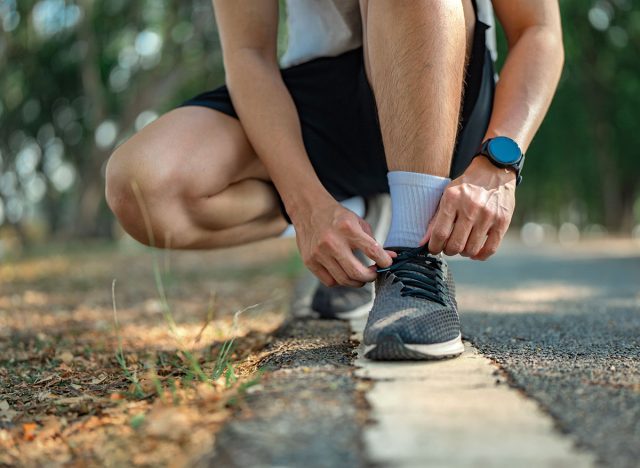
Thomas admits that his weight loss had a lot to do with improving his eating habits, "because I'm a diet guy." However, there was also one workout instrumental in shedding well over 100 pounds. "I walked. Doesn't mean I didn't lift, doesn't mean I didn't run. Doesn't mean I didn't do other things. But the large majority of my activity was walking, simply walking," he says in the video.
He Notes There Are Lots of Benefits
According to Thomas, walking is great for more than just weight loss. "I'm gonna lay out the details of the benefits and why it's so advantageous when it comes down to preserving muscle and things like that," he says.
Obesity Is on the Rise, According to Science
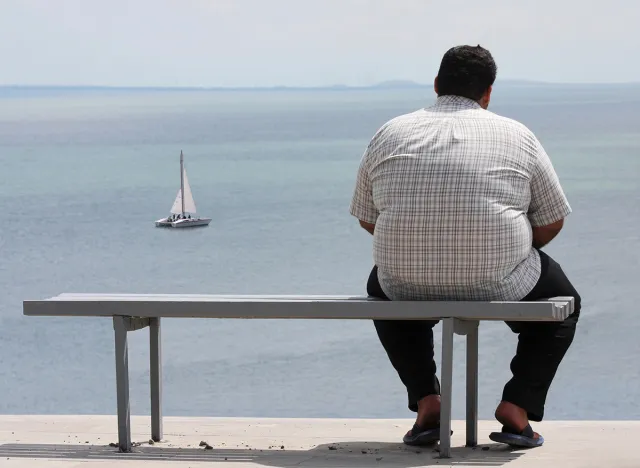
Thomas brings up a study proving that obesity is on the rise. "It demonstrated that by the year 2031, out of two people are going to be obese, and one out of every four people are going to be severely obese. That is flipping scary, okay? That is a dangerous path that we are walking towards, no pun intended," he says.
Another Cohort Study Divided People Into Four Categories
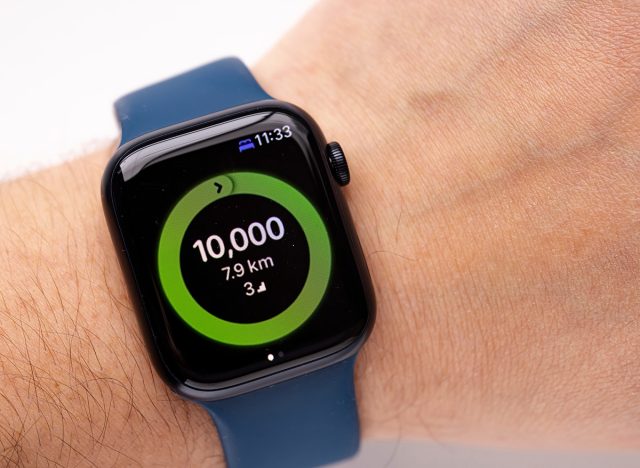
He also mentions a large cohort study published in Lancet "that took a look at 15 individualized cohort studies, and it divided people into four simple categories. People that walked about 3,500 steps per day, 5,800 steps per day, 7,800 steps per day, and just shy of 11,000 steps per day," he says.
People Who Walked More Were Less Likely to Die

"There was a dose-dependent relationship between how much people walked and their all-cause mortality," he reveals. "People who walked 5,800 steps per day were 40% less likely to die than people who walked 3,500 steps per day. People who walked 7,800 steps per day were 45% less likely to die and less risk of all-cause mortality. People who walked close to 11,000 steps per day had 53% less risk in all causes of mortality compared to the 3,500-step group."
Lots of Things Can Be "Mitigated" By Moving Your Muscles
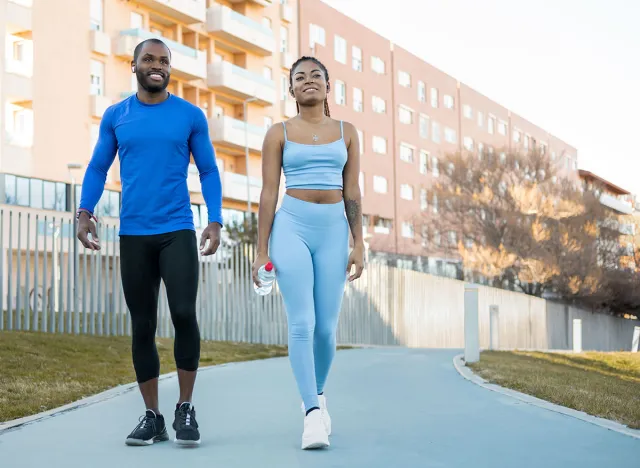
This isn't just to scare you. It's to really demonstrate that the simplest thing we can do is just walk from a metabolic side of things. Insulin resistance, all of this can dramatically be mitigated by moving our muscles.
Resistance Training Offers Benefits, Too
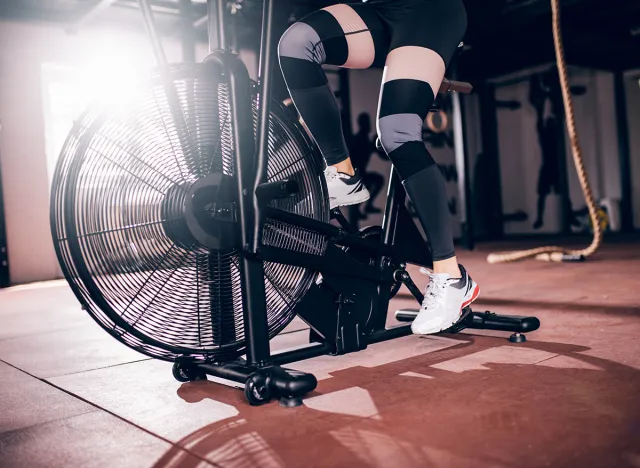
He adds that strength training is also great for this. "Resistance training definitely has its metabolic benefits when it comes down to improving insulin resistance and improving that," he adds.
But Walking Contracts Large Muscle in the Body
He notes that "walking is moving some of the largest muscles in our body, our glutes, our quads, our hamstrings, big muscles, and when we move these muscles, something miraculous happens," he says. "It doesn't just do healthy things for us. The simple contraction of these muscles sucks glucose out of the bloodstream without insulin even being required, meaning that's giving the pancreas a break from having to pump out insulin while the cells in your legs are sucking glucose outta the bloodstream. That same glucose that's floating around the bloodstream potentially causing damage because it's elevated so metabolically."
Walking Is Also an Easier Workout
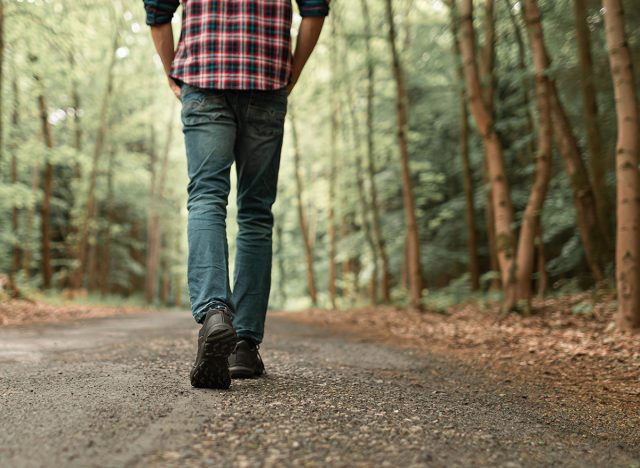
Walking is also more realistic. "It's a lot easier to get someone to walk than it is to get them to start resistance training. Start with walking," he says.
Even Walking 1,000 Extra Steps Will Decrease the Risk of Mortality
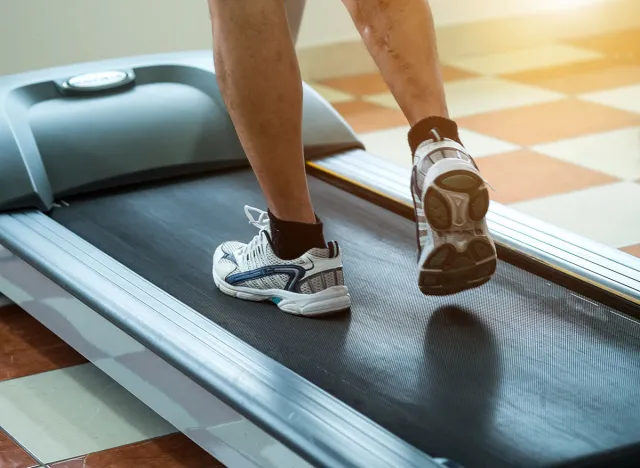
He adds that another study "demonstrated if you just increase your step count 1000 steps from where you are right now, per day, you have a 12% less risk of mortality, 12% less chance of dying if you take the number of steps you're walking today and increase that by a thousand. Now, there is a caveat. The upper end is like 17,000 after that point. It's a line of diminishing return, but walking also utilizes more fat as a percentage of fuel," he says.
Walking Can Burn More Fat Than Running

He also addresses the argument that running for 60 minutes will burn more calories and ultimately burn more fat than walking for 60 minutes. "That is true, but as a percentage, walking is going to burn more fat, which is definitely going to count for something huge because you can walk for a long period of time. So that means the longer that you walk at a low intensity, the more fat you are utilizing and less carbohydrates and other fuel you're utilizing. Meaning if you have the time to walk and just casually walk, you're going to burn a lot of fat and only fat and not break up nearly as much muscle," he points out.
Walking Is Also Muscle Sparing
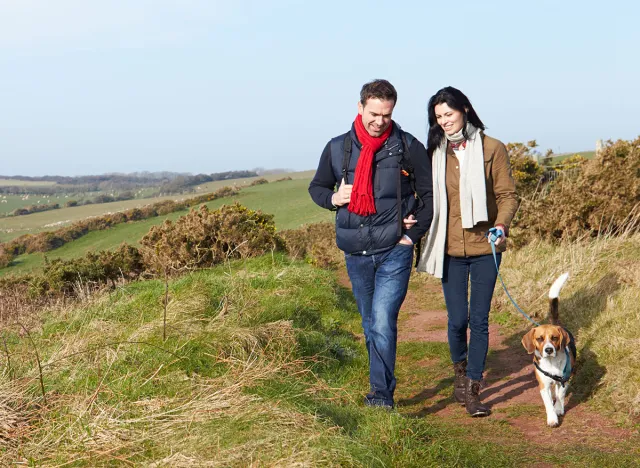
His next point? "Walking is very muscle sparing. So in the spirit of a thoughtful nod towards all the benefits of resistance training, clearly I resistance train, it's important. But in the spirit of that, how do we preserve that much muscle mass? We need to have a balance of high VO O2 max activity where we're really stressing our cardiorespiratory system and making it stronger."
RELATED: I Walked 10,000 Steps Every Day for a Month Without Dieting — Here's What Really Happened
Walking Improves Angiogenesis

"But the lion's share of our caloric burn should come from simple walking and moving. It's going to be very muscle sparing. It's gonna improve what's called angiogenesis. It's gonna improve it. You get more blood flow into the actual muscle area, making it so that that muscle can activate better and preserve better," he says.
The Low Intensity Is Also Great for Utilizing Fats
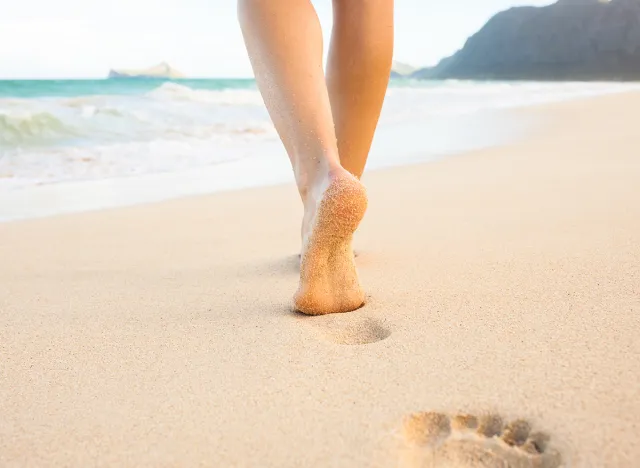
"Plus, the lower intensity is really, really, really good when it comes down to utilizing fats, which are going to spare muscle breakdown," he says.
Make Sure to Replenish Electrolytes

"Something that's very important is that when you're walking, you may not realize, because you're not crazy sweating and things like that, that you are still burning through electrolytes," he says. He also recommends electrolyte-enhanced water. "If you're going for a walk fasted, maybe you're not eating something. That's what I typically do. I'll just sip on some Element while I'm walking, and it almost feels like I'm drinking something I shouldn't be drinking it. It feels really good. It doesn't have any artificial sweeteners, so it doesn't have any of the nasty stuff. It's just salt, potassium, magnesium, and some stuff that makes it taste a little bit good."
Walking Is Non-Concussive

"The next reason is simple. It's non-concussive," he says. "It does not beat up your joints the way other things do. Do not get me wrong. I love hard things. I sprint a lot. I do intense cardio a lot. I do metcons. I do it all," he admits, noting that the "bulk" of his active time is just walking, "because if I were spending the bulk of my active time running, I probably wouldn't have the joints that I have now," he says.
RELATED: 17 Surprising Fat-Blasting Tricks for Women Over 50
Walking Is Great for Your Body

In summary, walking is great for your body. "The bottom line with it is you're not beating up your body, It's sustainable, and that really, really counts for something," he says.
It Is Also More "Natural"
The last piece is it allows you to get the natural other things that need to come into your life," he says. "Vitamin D, sun exposure, low light gazing, all these things that affect our brain and affect our neurochemistry."
You Can Multitask

"If we are segmenting our workout life and our regular life a bunch, then we don't get that because then we're compartmentalizing," he says. "We're having to spend all this extra time walking, allowing us to get it all done in one simple place. Go out for a walk. Take your phone calls on a walk. Go out for a walk. Take your dogs for a walk. Go out for a walk. Get some space from your family for a minute if you need it, go for a walk."
Bottom Line: Walking Offers Lots of Benefits
"Whatever you need to do, you can get your sunlight. You can get your low light gazing, which affects your sleep. You can get the metabolic effect, you can get the fat burning effect, you can get the glucose modulation effect, and you can get the angiogenesis effect that's probably gonna make you stronger in their weight room as well," he concludes. And if you enjoyed this article, take advantage of these 15 Quick Ways to Lose Body Fat Percentage in a Week.





